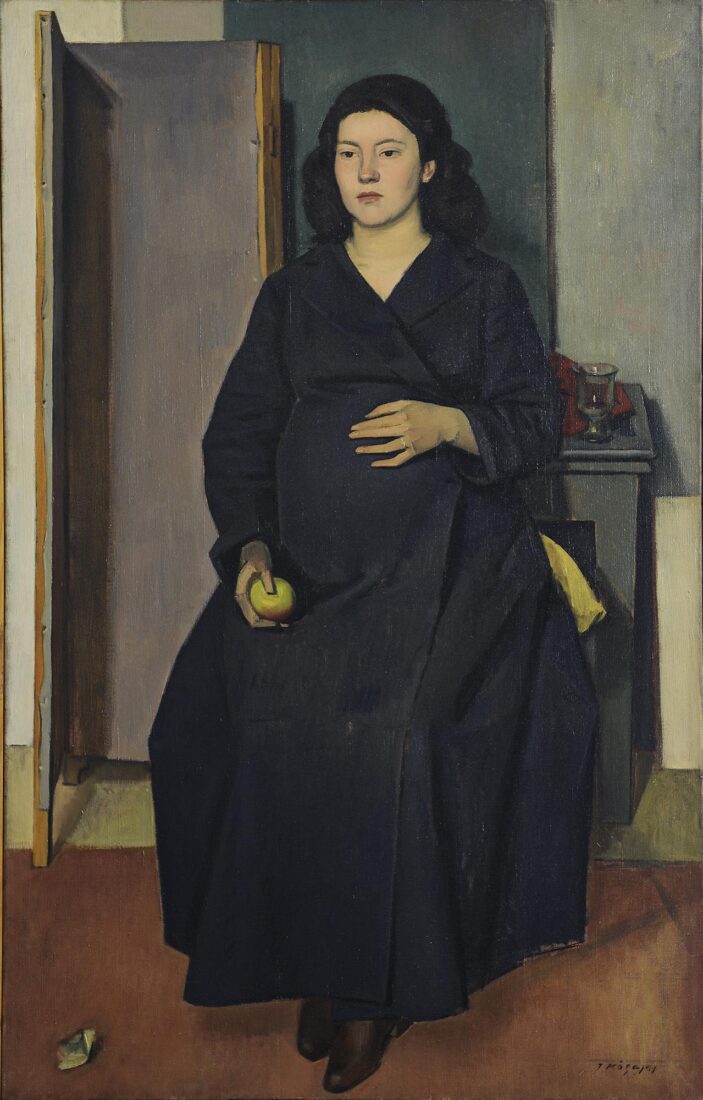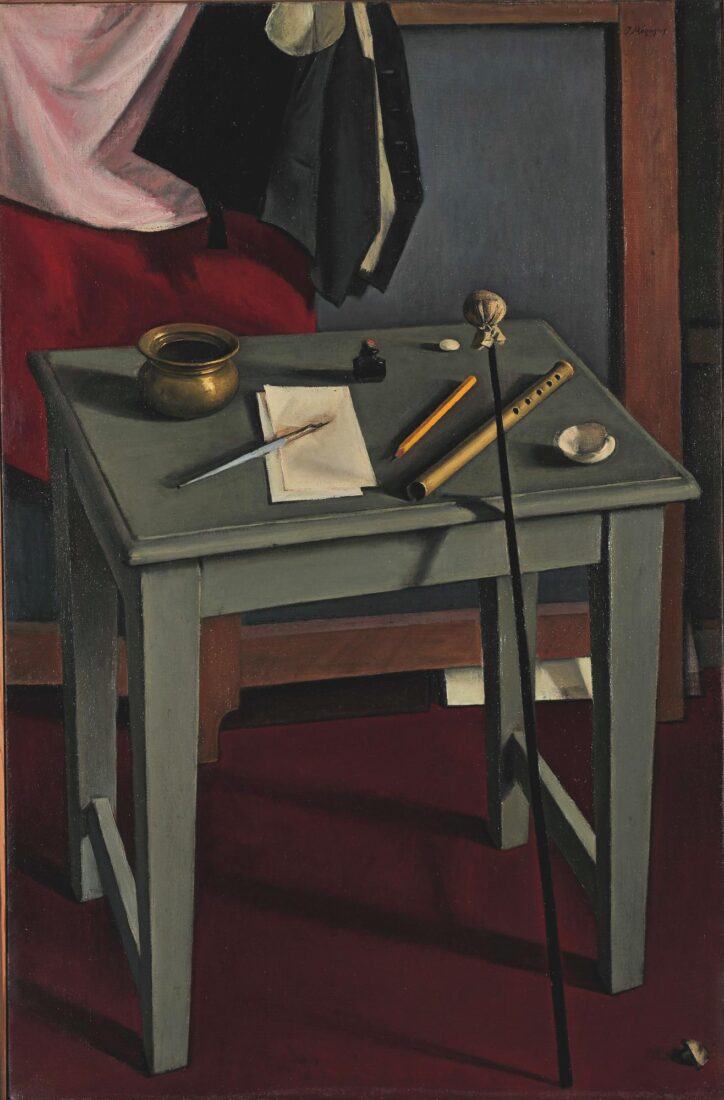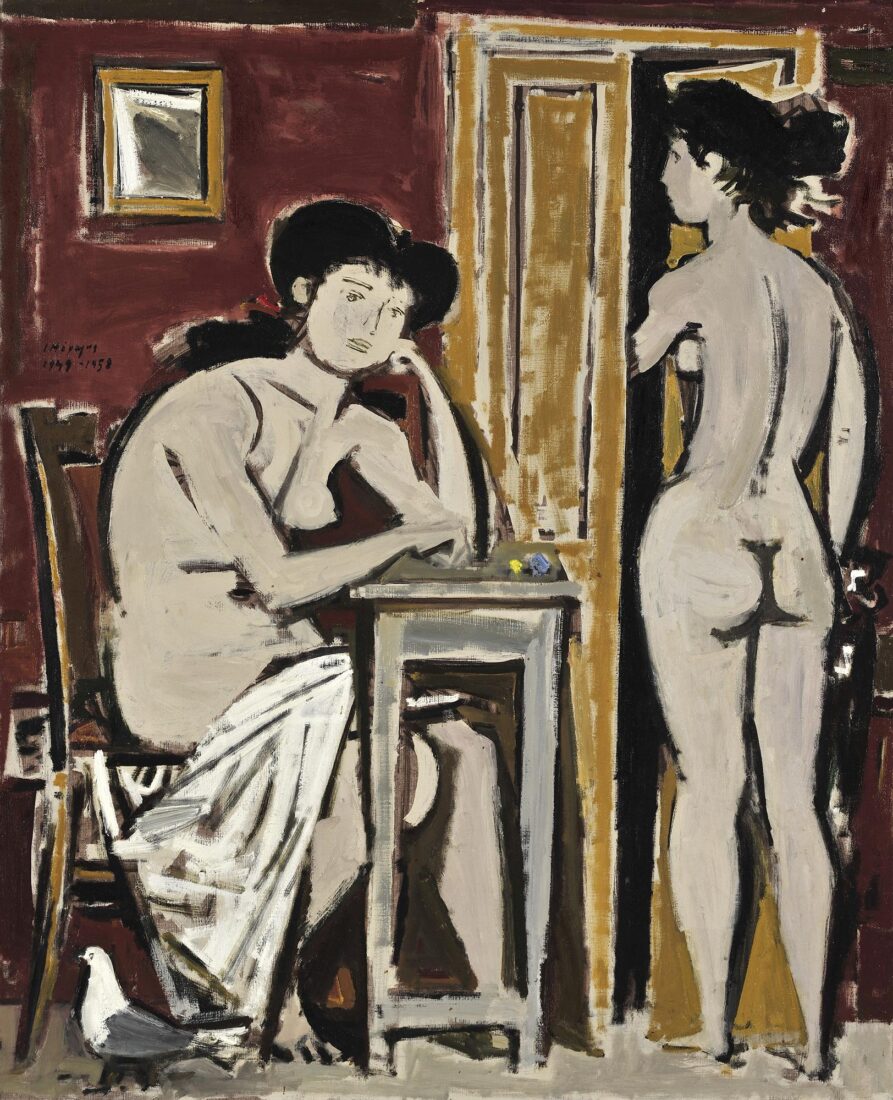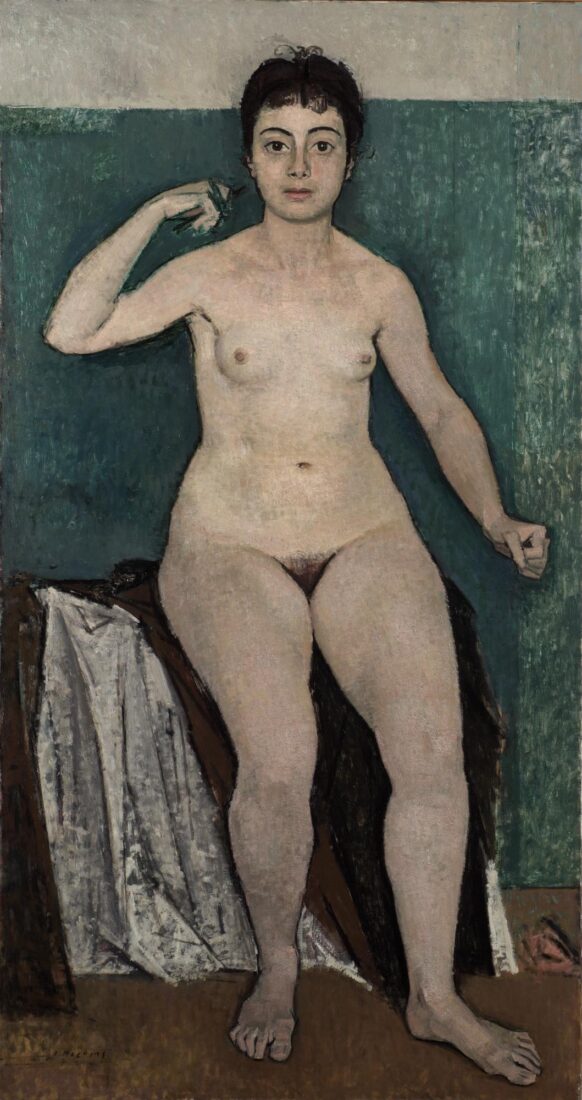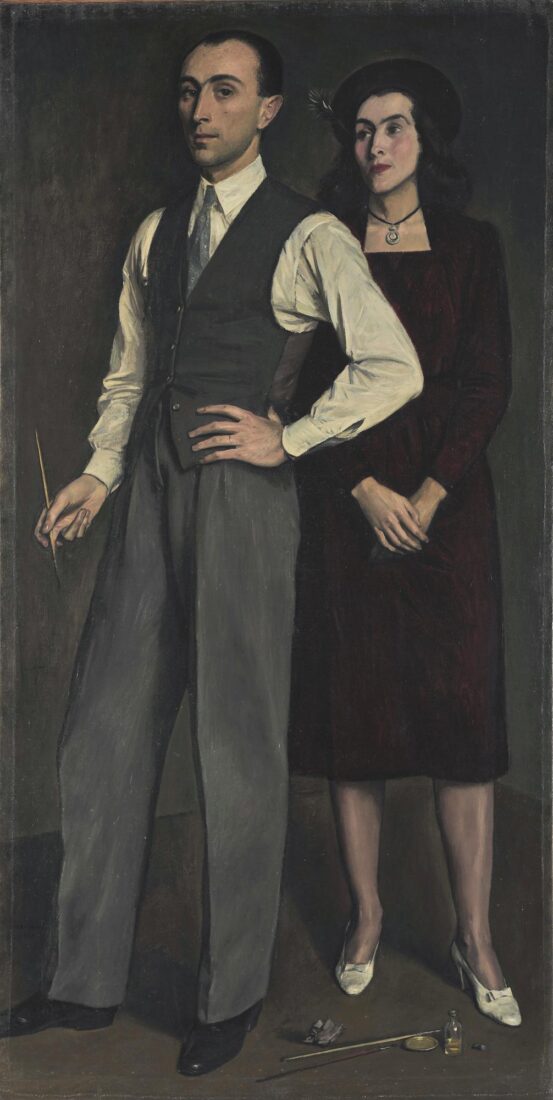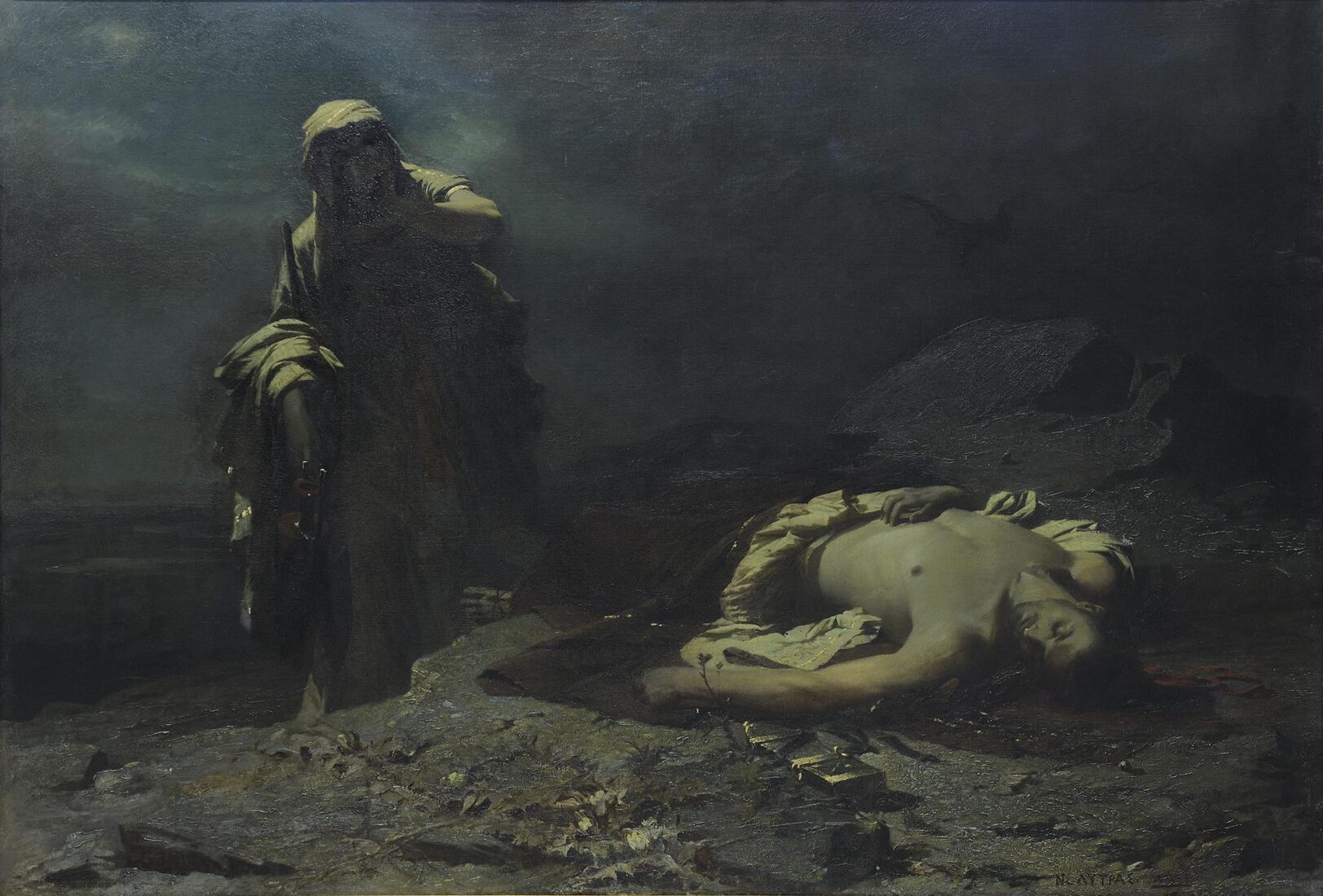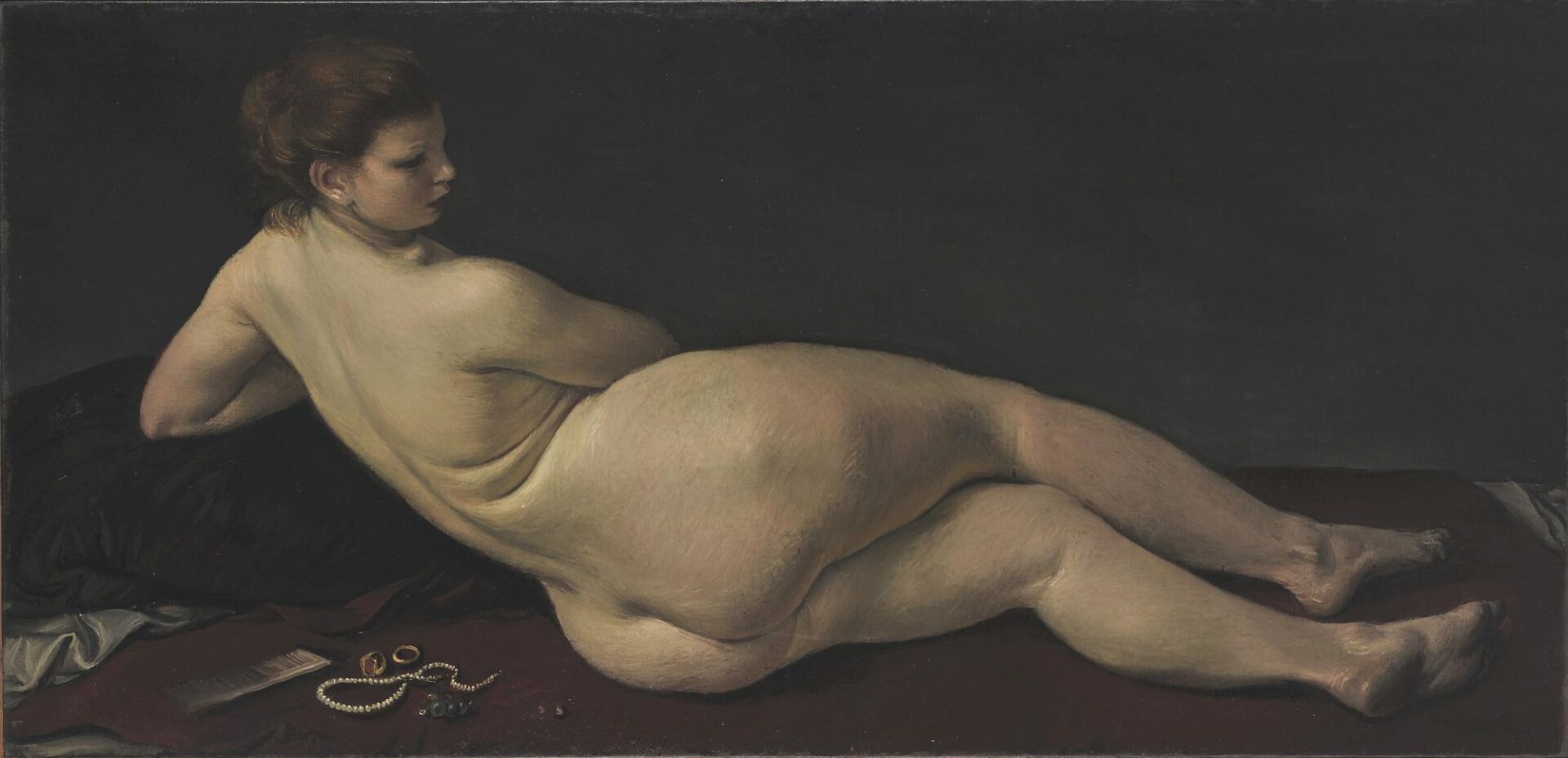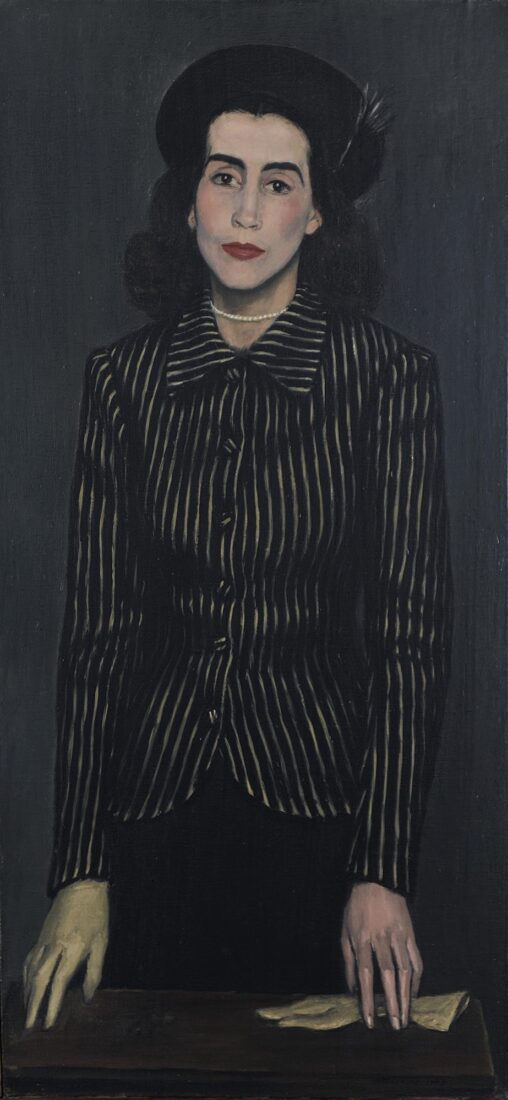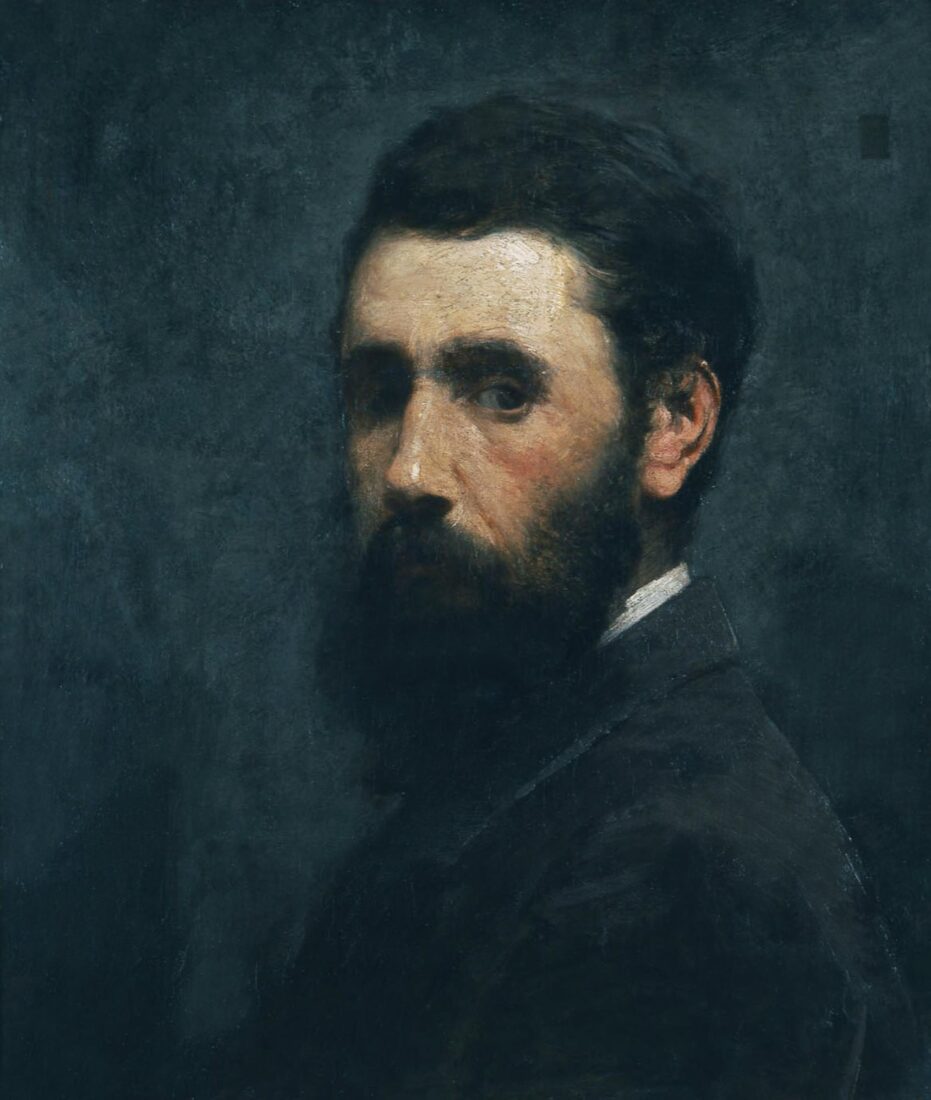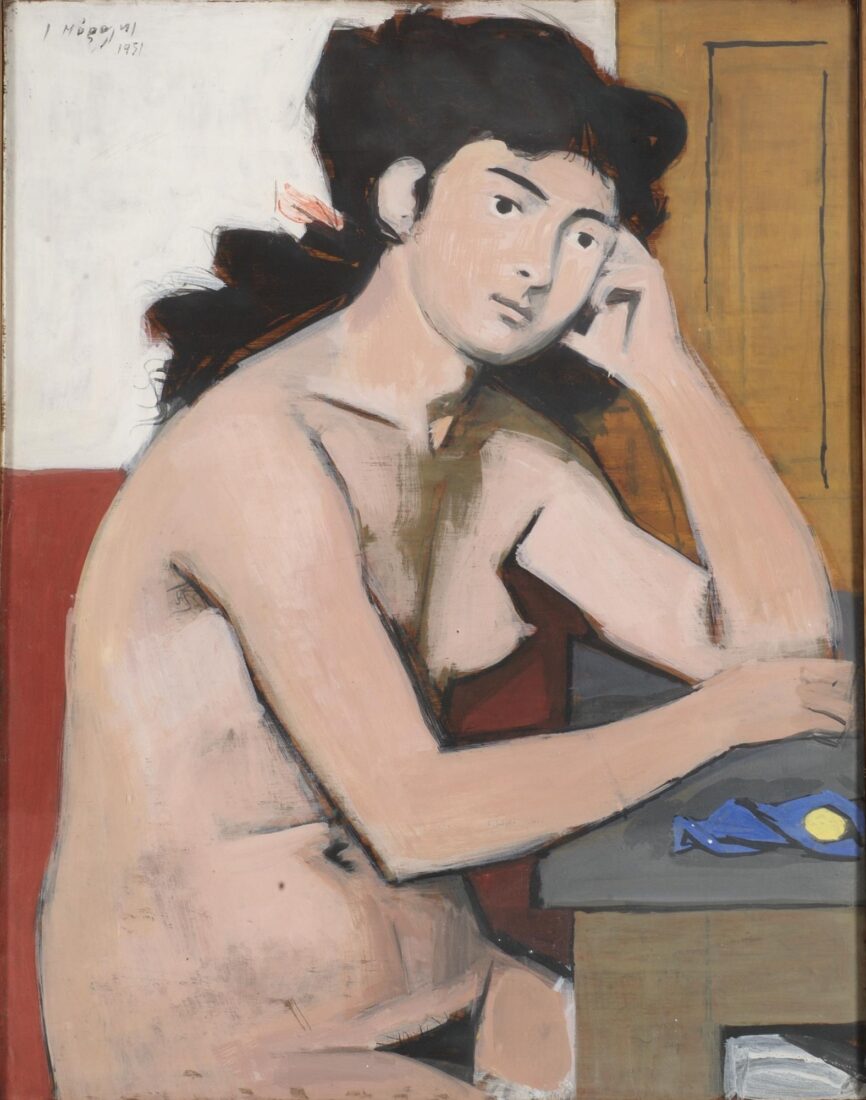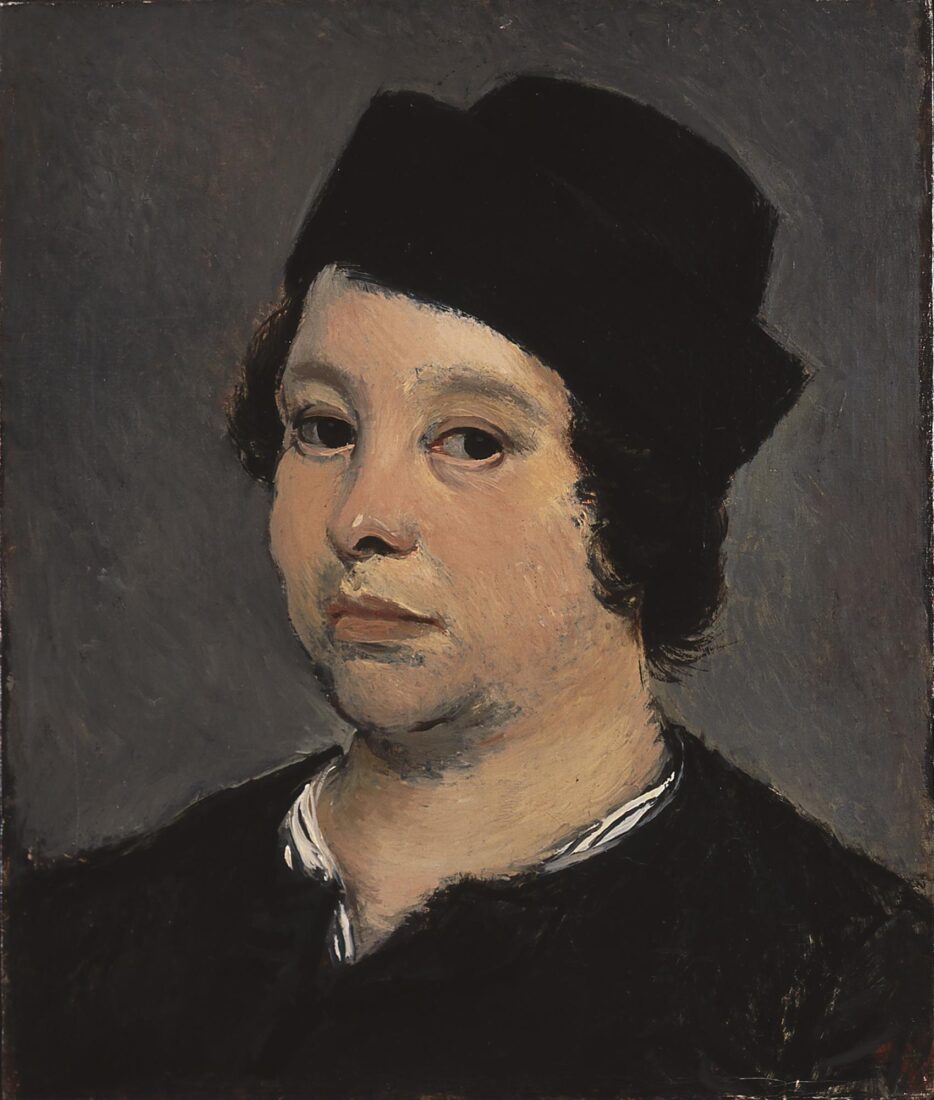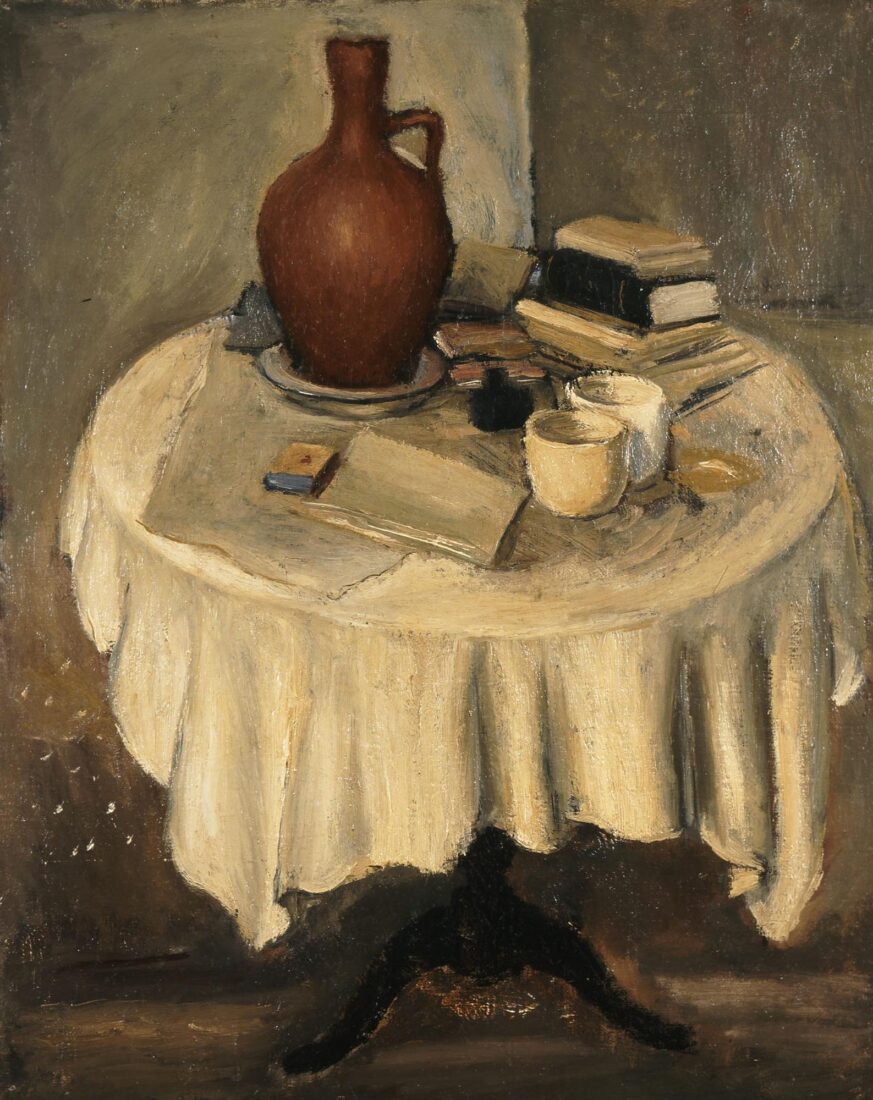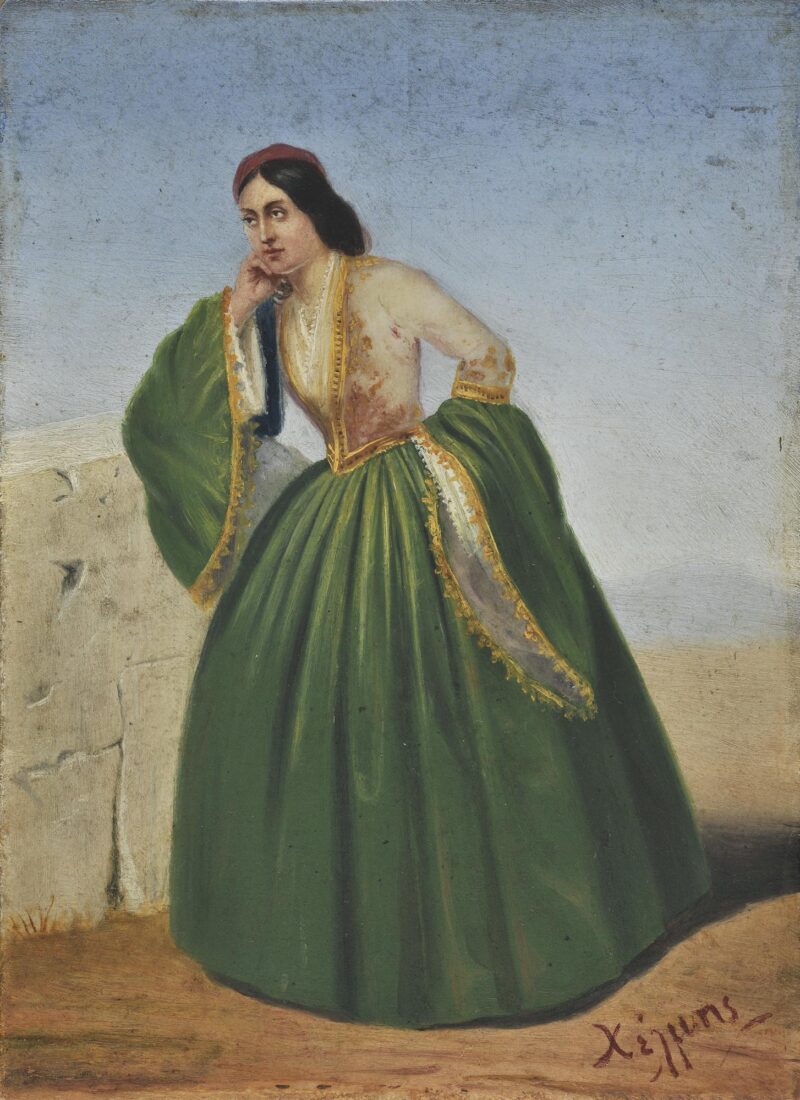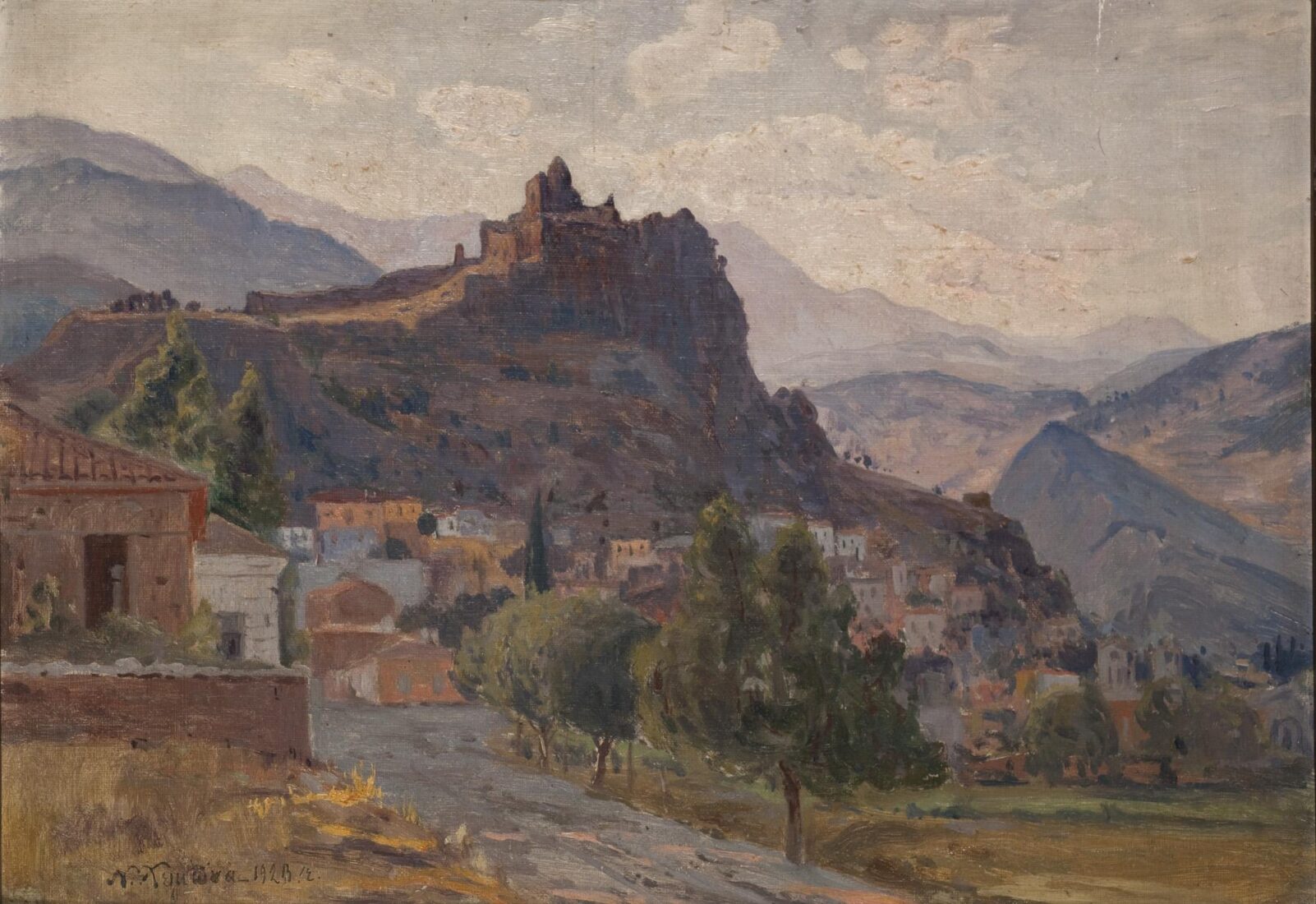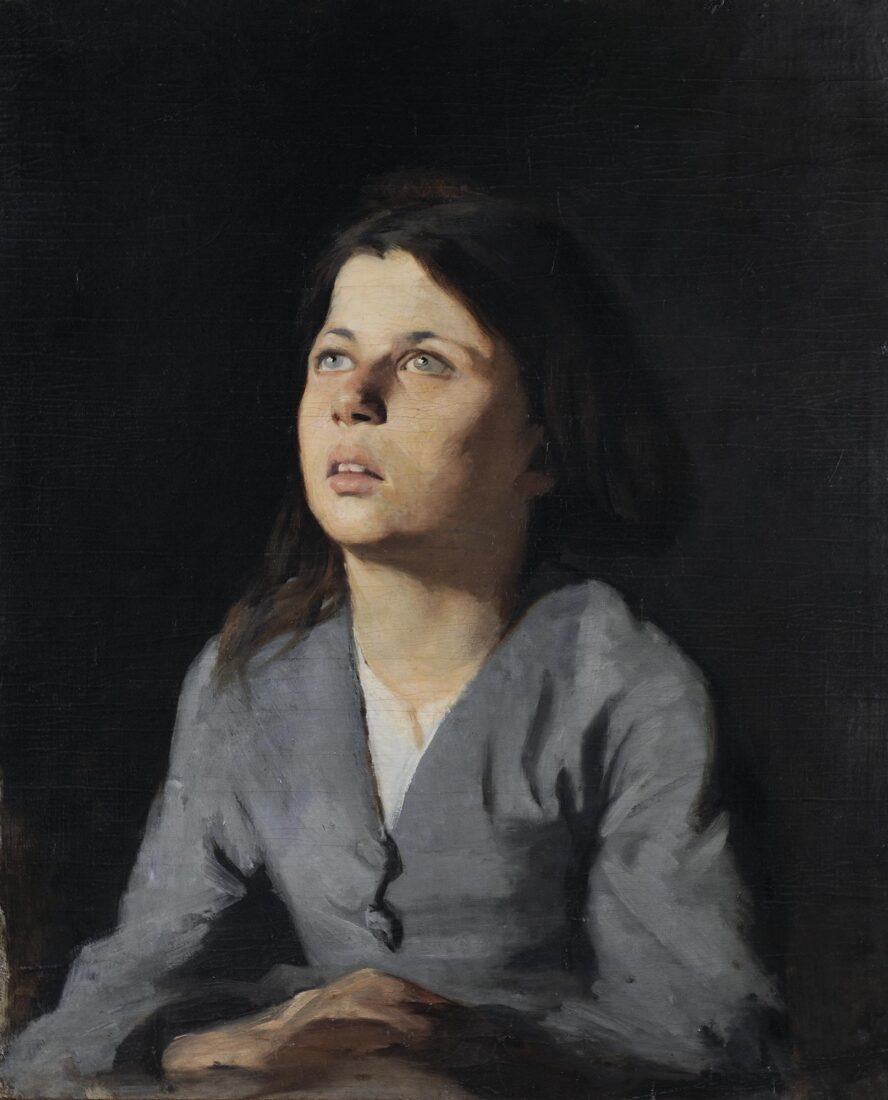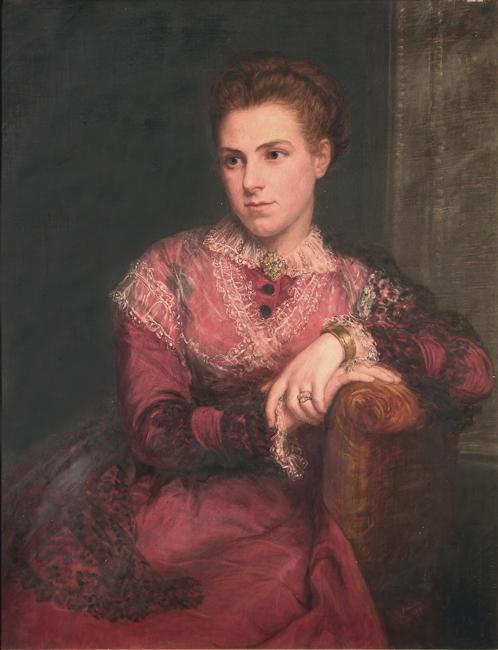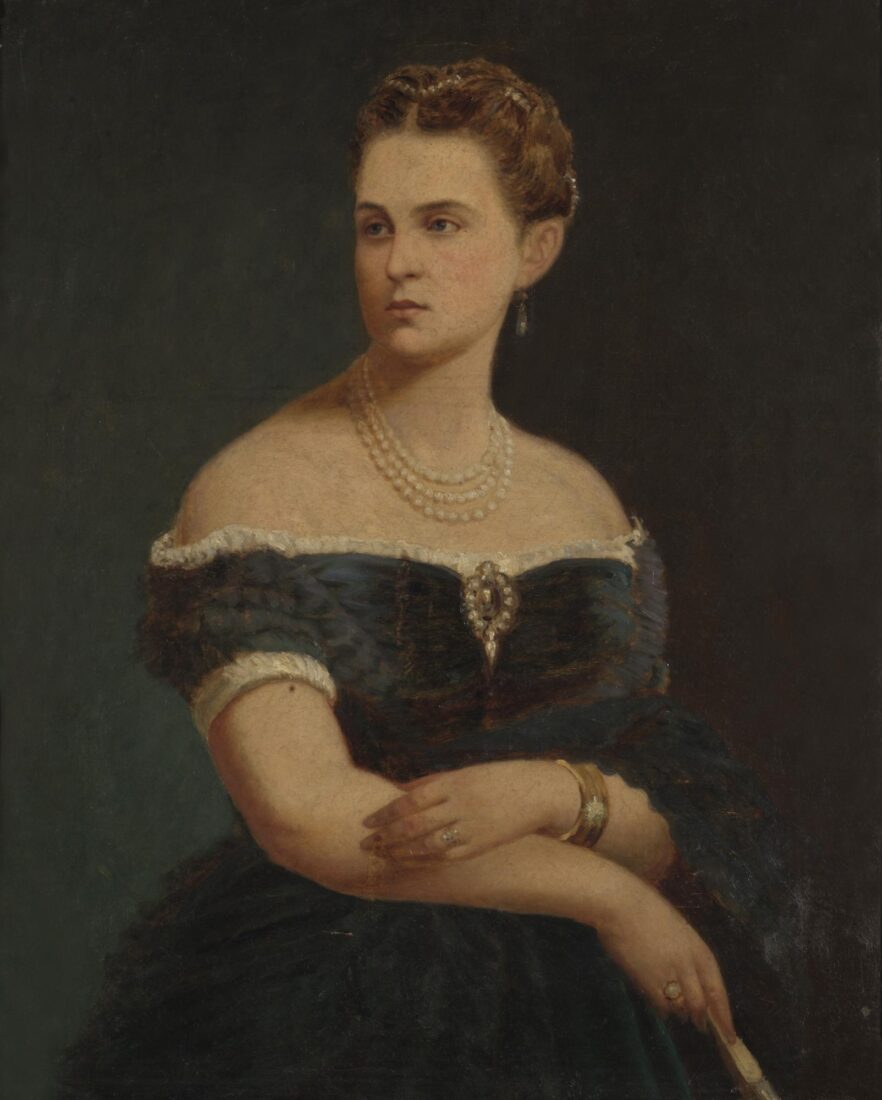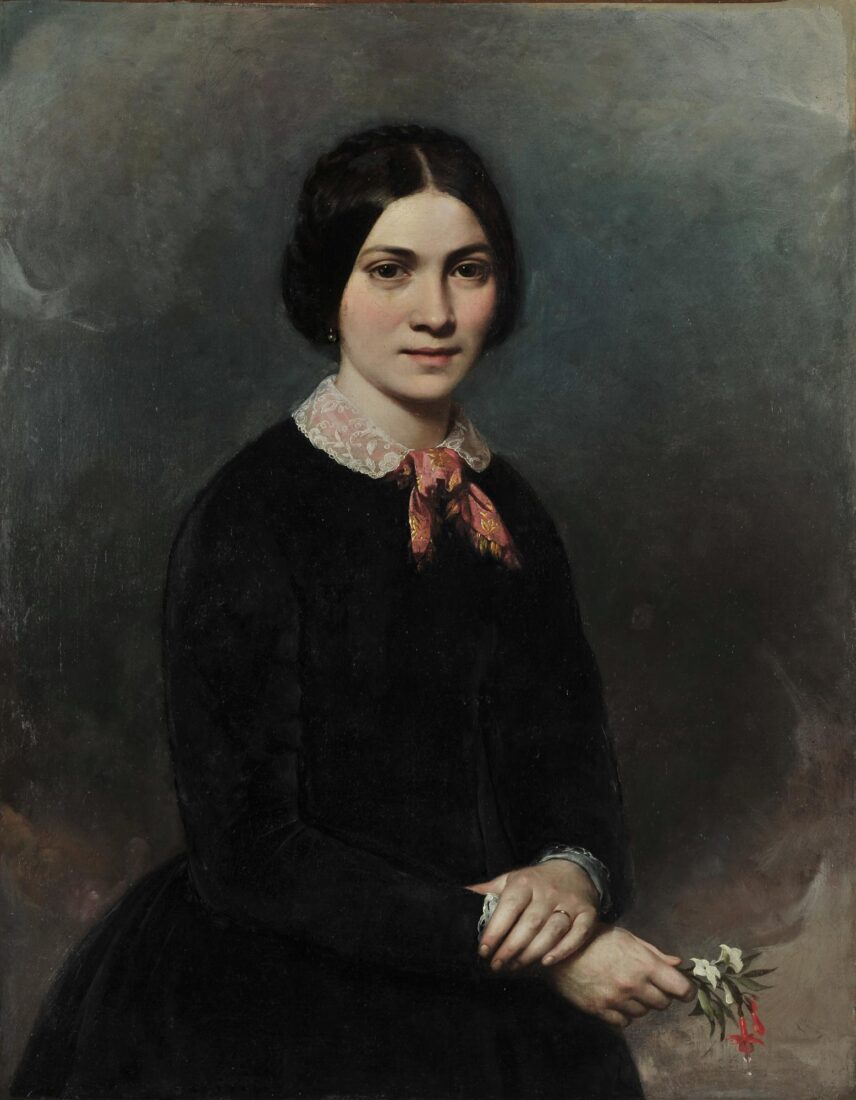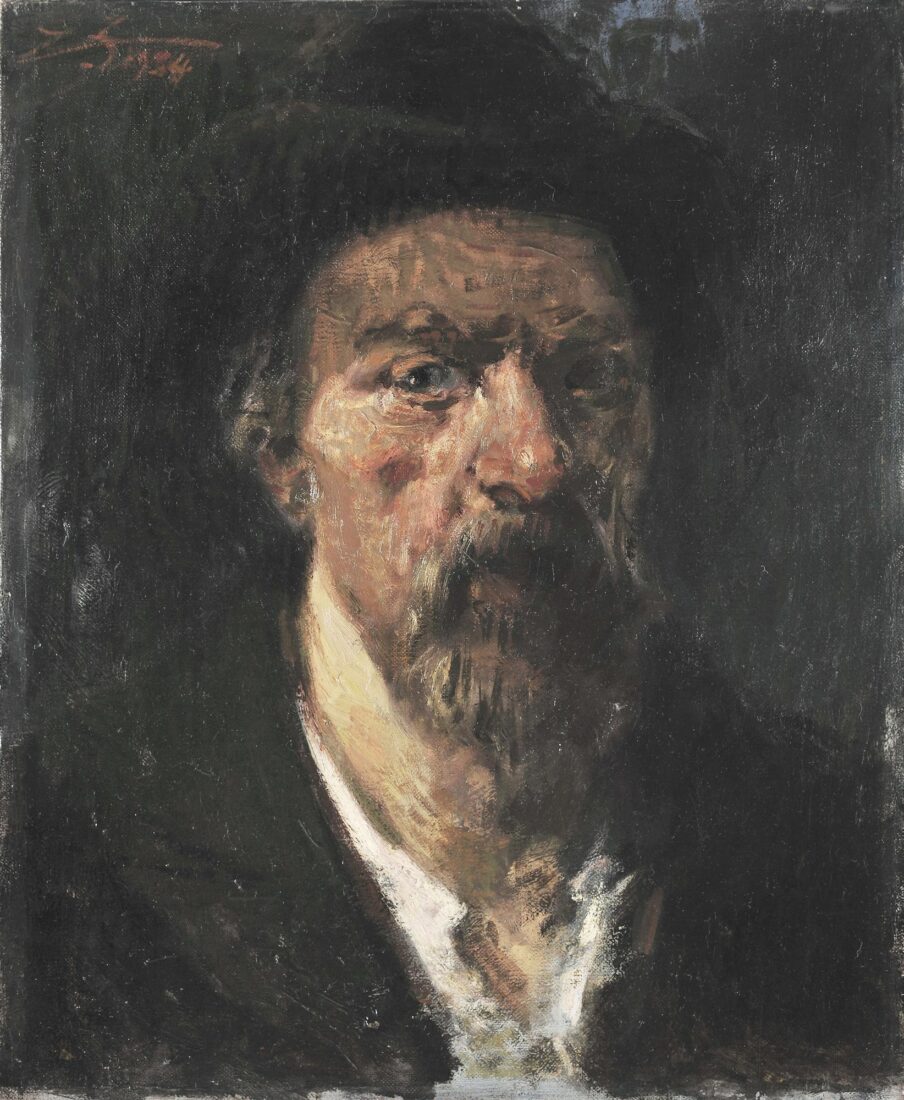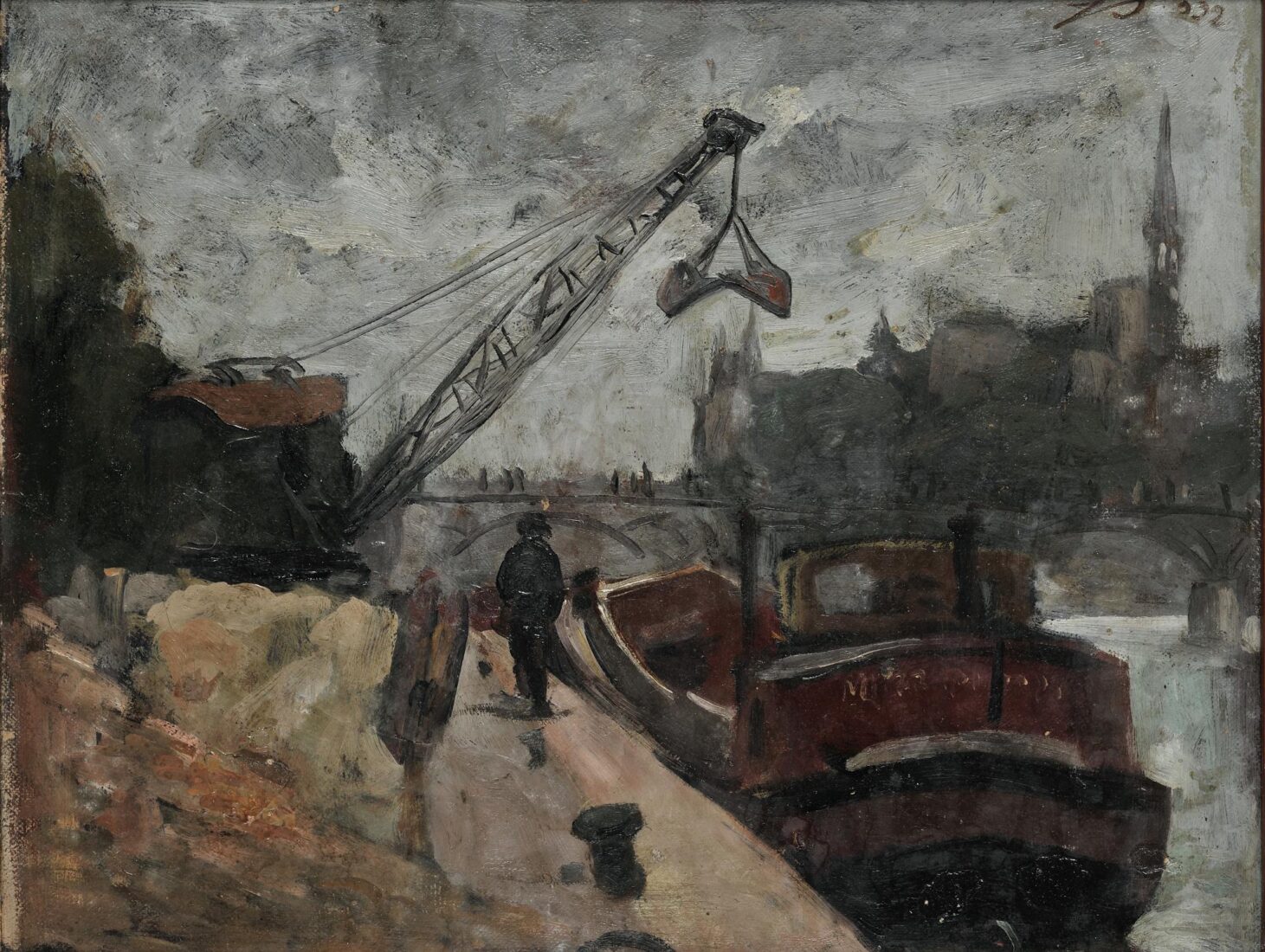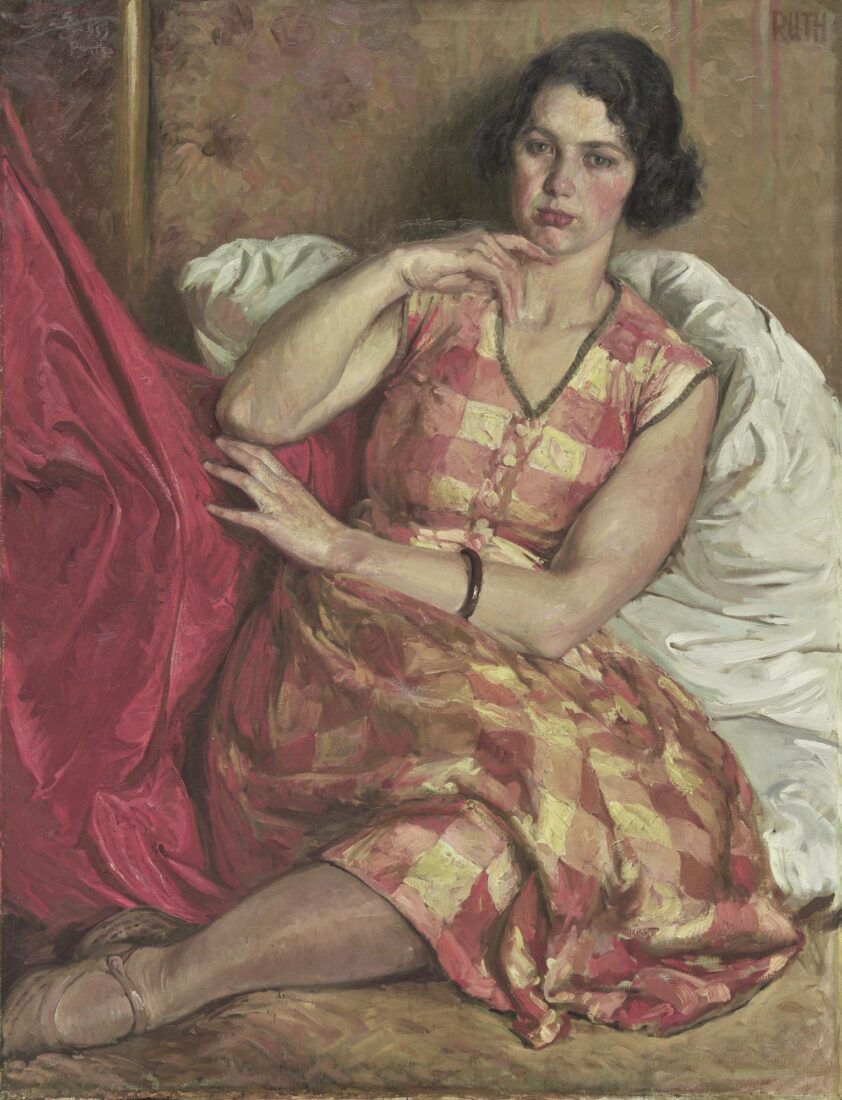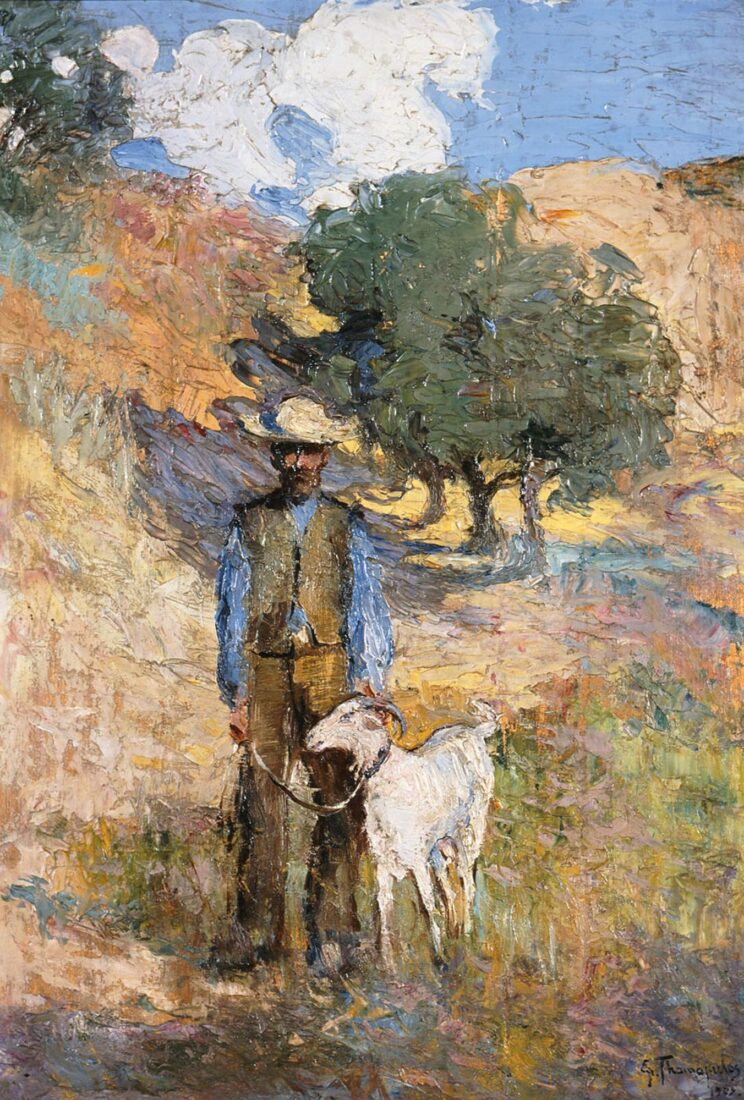The “Pregnant Woman” portrays the sculptor Buba Lymberaki, now the artist’s wife, carrying his son. She is seated in a setting without depth, defined by planes parallel to the painted surface. These are characteristic of classical art. The pregnant woman is dressed in an austere black robe with violet tones. In her right hand she is holding an apple, a symbol of fertility, while her left hand rests on her womb in a protective gesture, emphasising the late state of her pregnancy. Her eye, hypnotized, focuses on infinity as if contemplating the mystery of the life she is carrying. The way the floor has been rendered, the geometrical arrangement of the background – in which vertical lines prevail –, the unadorned geometrical articulation of the figure, economy in the colour composition, all these traits make this a classical painting. Never ceasing to be the full-body portrait of an individual, indeed a loved one, the Pregnant Woman becomes a timeless symbol of fertility. Also one of the markings of classical art, another admirable quality of Moralis’ art is the artist’s emotional distance from his subject, even though it is one of great intimacy.
According to Yannis Moralis himself, “”Composition I”” introduces the artist’s series of Funeral Compositions. He has revealed that he dreamt this scene and captured it on paper as soon as he woke up so that he could take it up at a later time. Funeral Compositions are inspired by Attic funerary stelae, with which they share certain characteristics: In stelae, two or three figures are depicted — one of them seated, identified with the deceased — also in a depthless setting. Their pose is meditative, expressive of restrained sorrow. In Moralis’ funeral compositions, women of a young age prevail, as they do throughout his work. The “”Mystery Villa”” in Pompey is another of his sources of inspiration.
Here, the setting is defined by the door frame and a mirror hanging on the wall. The depth is just enough for the table to fit, against which the seated, meditative and sorrowful girl is leaning. The other nude girl has already half-opened the door, about to leave. This is a hint of death. The work has been sketched in forceful, assured outlines, which moreover serve to suggest volume, as chiaroscuro is totally absent. The colour harmony of the cherry-red wall and the yellowy ochre door, against which the light pink flesh of the nude bodies projects, is effective and free of all superficiality.
